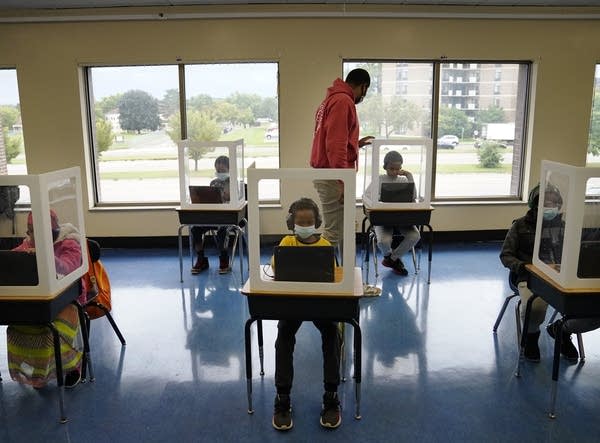Walz extends curbs on bars, eateries; grade schools OK'd to reopen
Gyms can open conditionally starting Saturday

Paraprofessional Jaevon Walton, center, reminds a student to wear his face mask in a learning pod of second through seventh graders at Harvest Best Academy Sept. 8 in Minneapolis.
David Joles | Star Tribune via AP file
Go Deeper.
Create an account or log in to save stories.
Like this?
Thanks for liking this story! We have added it to a list of your favorite stories.


